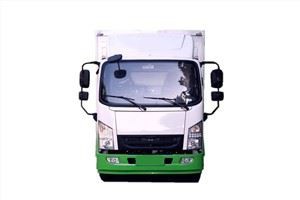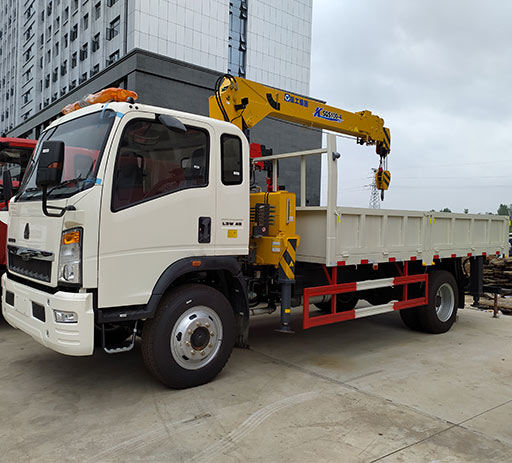The Biggest Garbage Truck: A Comprehensive Guide

Introduction
The world of waste management is often overlooked, yet it plays an essential role in keeping our environments clean and functional. Among the myriad of waste collection vehicles, the biggest garbage truck stands out not only for its size but also for its capabilities. These colossal machines are a testament to engineering excellence and play a vital role in urban waste management. This article dives deep into the features, types, technologies, and importance of the biggest garbage truck, offering insights, examples, and tips relevant to both municipal authorities and residents.
Understanding Garbage Trucks
What is a Garbage Truck?
A garbage truck is a vehicle used for collecting municipal solid waste and transporting it to a waste treatment facility. They are usually designed with a hydraulic lifting system for tipping waste into the truck’s body and are equipped to handle various types of waste.
Types of Garbage Trucks
- Rear Loader Trucks: These trucks have a large opening at the back where waste is loaded. They are typically used for smaller waste collection tasks.
- Front Loader Trucks: Equipped with forks at the front, these trucks are ideal for commercial waste collection where dumpsters are used.
- Side Loader Trucks: These facilitate loading waste from the side of the truck, making them efficient for residential areas.
- Roll-off Garbage Trucks: These trucks can carry containers, making them perfect for construction sites and large waste removal projects.

The Biggest Garbage Truck: Features and Specifications
Size and Capacity
The biggest garbage trucks can be classified based on their payload capacity and overall dimensions. Some of the largest models can carry over 30 tons of waste per load. For example, the International 7600 and Peterbilt 320 are renowned for their enormous capacity.

Engine Power and Performance
These trucks are equipped with powerful diesel engines that can handle heavy loads and tough terrains. Many of the largest models feature engines that produce over 400 horsepower, ensuring they can efficiently navigate through city streets and highways.
Fuel Efficiency
Despite their size and power, advancements in technology have led to better fuel efficiency in newer models. Many garbage trucks now incorporate hybrid technologies to reduce fuel consumption and emissions.
Technological Advances in Garbage Trucks
Automated Loading Systems
Modernizing waste collection, many big garbage trucks come equipped with automated loading systems. These systems allow the truck to collect waste using mechanical arms, minimizing the need for manual labor.
GPS and Route Optimization
Many of the biggest garbage trucks are now fitted with GPS technology, which aids in route optimization. This technology ensures that waste collection is done efficiently and effectively, reducing fuel usage and time spent on the road.
Smart Waste Management
Some advanced models feature smart waste management systems that can monitor the truck’s load, alerting operators when a truck is nearing full capacity. This predictive analysis can lead to better scheduling and fewer trips.
The Importance of the Biggest Garbage Trucks
Waste Collection Efficiency
The biggest garbage trucks are crucial for efficient waste collection in densely populated areas. Their ability to carry larger loads means fewer trips, reducing the overall traffic and emissions associated with garbage collection.
Environmental Impact

Larger garbage trucks can reduce the environmental impact of waste collection by minimizing the number of trucks on the road. This not only cuts down on fuel consumption but also decreases carbon emissions.
Supporting Sustainable Practices
By ensuring that waste is collected efficiently and effectively, municipalities can encourage more sustainable waste management practices, including recycling and composting.
Challenges in Utilizing Large Garbage Trucks
Cost Implications
Investing in the biggest garbage truck can be expensive. Initial purchase costs, maintenance, and fuel expenses need to be considered by municipalities.
Operational Difficulties
Driving and maneuvering larger trucks in tight urban spaces can pose challenges. Operators require special training to manage these vehicles effectively, ensuring road safety.
Maintenance and Upkeep
Regular maintenance is vital to ensure the longevity and functionality of these trucks. Municipalities need to budget for maintenance costs to avoid equipment failures.
Practical Tips for Municipalities
Choosing the Right Garbage Truck
When selecting a garbage truck, municipalities should consider factors such as load capacity, engine power, fuel efficiency, and the specific waste collection needs of their community.
Investing in Training
Investing in proper training for operators is essential. Training ensures that operators are equipped to handle the size and functionality of larger garbage trucks, promoting safety on the roads.
Establishing Maintenance Routines
Regularly scheduled maintenance routines can reduce downtime and extend the lifespan of garbage trucks. Municipalities should establish clear guidelines for maintenance checks.
Case Studies of Successful Garbage Truck Implementation
Los Angeles, California
Los Angeles has implemented the use of electric garbage trucks to enhance their waste collection program. These trucks are environmentally friendly, significantly reducing greenhouse gas emissions in a city known for its traffic congestion.
New York City
New York has invested in a fleet of large side-loader garbage trucks that improve efficiency in residential areas. The implementation of GPS technology in these trucks has resulted in optimized routes, saving the city time and fuel costs.
San Francisco’s Zero Waste Initiative
San Francisco has adopted some of the largest garbage trucks on the market as part of their ambitious zero waste initiative. The trucks facilitate efficient collection that aids in the city’s recycling and composting programs.
FAQ About the Biggest Garbage Trucks
1. What is the largest garbage truck in the world?
The largest garbage truck in the world is often considered to be the Heil Python, known for its capacity and technological advancements.
2. How much waste can the biggest garbage trucks carry?
The biggest garbage trucks can carry upwards of 30 tons of waste per trip, depending on the model and configuration.
3. Are bigger garbage trucks more fuel-efficient?
While larger trucks may consume more fuel due to their size, many modern models incorporate technologies that enhance fuel efficiency and reduce overall consumption.
4. How does automation in garbage trucks work?
Automated garbage trucks utilize hydraulic arms to lift and empty waste containers into the truck, reducing manual labor requirements and speeding up the collection process.
5. What are the main challenges of using large garbage trucks?
Main challenges include high costs, difficulties in maneuvering in tight spaces, and the need for specialized operator training.
6. How can municipalities benefit from using the largest garbage trucks?
Municipalities benefit through improved efficiency, reduced emissions, and the ability to manage waste collection in densely populated areas effectively.
